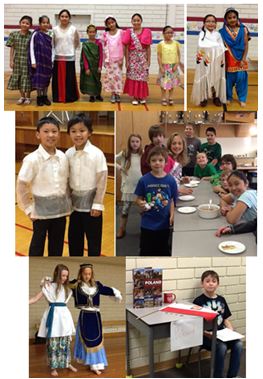My hiatus from blogging has not been without reason. I have been taking some time to do some personal and professional growth. For as long as I remember, I have identified more or less with my prominent life role. Someone would ask “Who are you?” and I would reply with daughter, student, traveller, or teacher. My recent personal growth has reminded me how important and satisfying being a whole person can be and how this holistic approach to life makes the roles we take in life more satisfying and helps us to continuously improve in these roles. I have been doing some deep reflection about my motivation and drive in my life and career. I took some time to anchor my spirit in a place of humility and refocus some of my egocentric tendencies to a broader understanding and compassion for others. I have started to redefine the relationships in my life. Evaluating the meaning they hold and how I can give more to these relationships. I do not think I was ready or brave enough to discuss these thoughts until more recently or perhaps allow others to influence the process.
I am a believer that the teacher is waiting, we just have to be ready for the lesson. I have been blessed that my path has met with two new life guides to whom I attributes some important lessons I have started to integrate into my internal dialogue, actions and interactions. One of these guides has been my personal trainer. She has challenged me to question my existing assumptions about how I define ‘good’ or ‘acceptable’. These conversations have continued to unfold into discussions and reflections on how to improve in my personal and professional life. I have taken an honest look at daily motions of my everyday life and the results they have on my students, family, friends and others. These reflections have motivated me to not only simply ‘do’ but to simply ‘grow’.
The second of these two guides has reignited my passion for life and the desire to live each moment to its fullest. I have faced some deep seeded fears and ghosts in deciding to take singing lessons. In doing so, I have been so blessed to have a new teacher in my life. She has allowed me to find peace in being vulnerable, which has brought me a new sense of humility and self-confidence. She has taught me that being vulnerable to other’s can foster self-reflection and motivation, but that I cannot let others define me. The gift of letting go of many of my fears and doubt has given me a new perspective on living. She inspires me to be a better teacher for my students and foster a classroom where they can grow with confidence and begin to grow in to the people they will become.
As I continue my studies at school, which focus on the process of professional learning and school improvement, the connections between the personal process upon which I have endeavoured and the ideals a school must establish for growth are interconnected. The trusting relationships I have established with these wonderful ladies has affirmed for me that people grow from within, that we do not grow for mandates and research initiatives. People change for people, people change for the betterment of themselves because we innately want to progress. Teachers grow for their students and colleagues- and that is the power and condition of humanity. This reminds me that the belief in the goodness and potential of humanity is the foundation for education. It is what gives teacher faith in their profession and gives us faith in our students. I continue to ponder the implications of who directs initiatives for change and how change is best accomplished. I question how leaders will navigate the gray areas of morality which affect change initiatives and how we must weigh the effects of change for all of humanity as the web of interconnectedness we are witnessing in the world exponentially progresses.
Most importantly though, I have learning this: growth begets growth. My goals to improve my academic, physical, spiritual and emotional growth have not lessened my ability to meet these goals, rather the opposite has happened. The growth I have made in one area facilitates my reflection and gives me experiences to draw from to help me grow in all areas. The energy and ability to let go of self-doubt and fears is helping me to be less concerned with my world and more concerned with the world and how interplay between the world, others and self can create change and how our actions and beliefs will affect those changes.

 RSS Feed
RSS Feed
